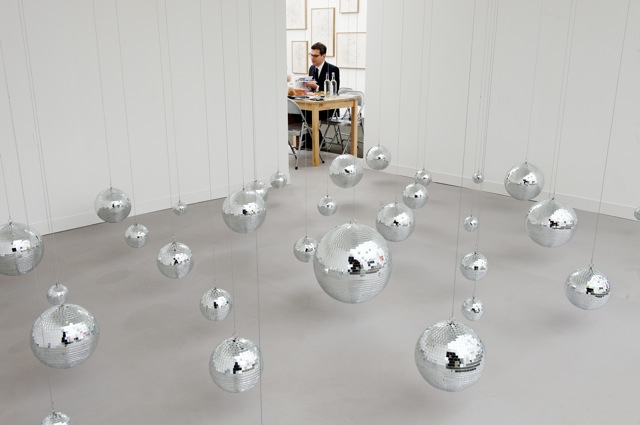
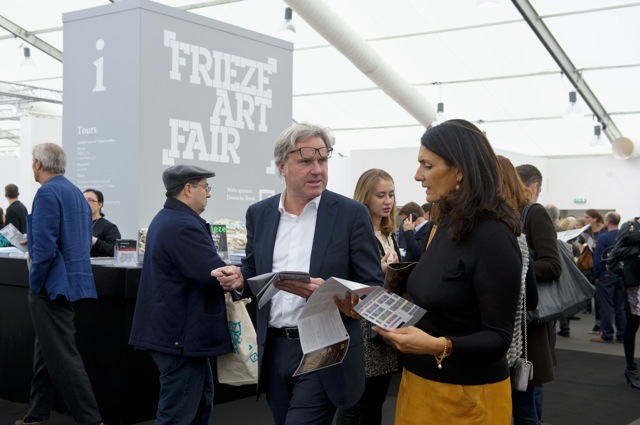
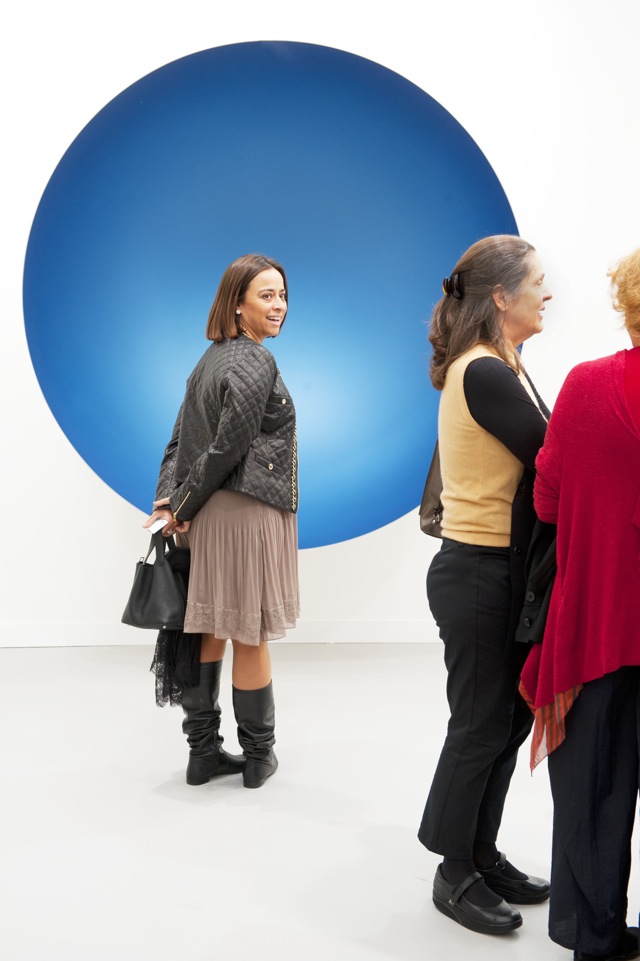
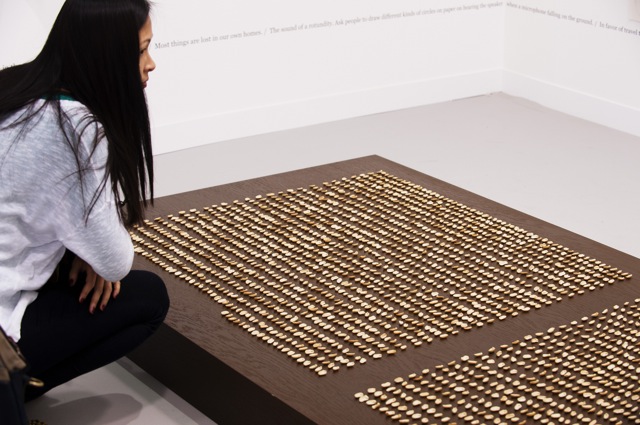
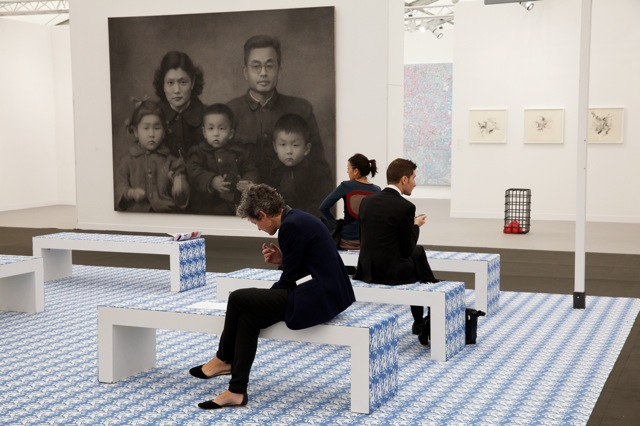

from the top: Valeska Soares, Galeria Fortes Vilaça, Sao Paulo; Frieze London; Anish Kapoor, Untitled (2012) Lisson Gallery, London; Vitamin Creative Space - winner of the 2012 Frieze London Stand Prize; Thomas Bayrle 'Sloping Loafers : Smooth' (2012) Courtesy of Polly Braden; Henrik Hakansson, The Y Swarm (Sturnus Vulgaris) #2 (2011) Meyer Riegger Berlin; all images Courtesy of Linda Nylind and © Frieze London
Frieze week started in earnest on Wednesday, with the vernissage of the 10th edition of the London fair opening its doors to the well-heeled of the world. In spite of the attendant peacockry and pageantry - the old refrain, ‘I don’t know what is more interesting to look at, the people or the art,’ got a good airing last night - the fair felt fresh and slick, and, as ever, it gives a decent overview of the notoriously slippery terrain of the contemporary art world. Or, at least, of what is being sold there, which is never quite the whole story. For example, it was interesting to note the relatively subdued presence of screen-based art. Especially since it feels as though film and video artists are currently running riot in London’s young art scene (witness ringleader Ed Atkin’s show at Chisenhale, the cavernous space dedicated to screen-based works in the V22 Young London exhibition and Hannah Sawtell’s just opened installation at the ICA, to take three very current examples). The installation of Ryan Trecartin’s sprawling and chaotic sculptural and multi-screen works at Andrea Rosen felt notably flattened by the tightly regimented, white-walled set-up of the fair booth.
The exception to prove this particular rule was Elizabeth Price, shown as part of a three-artist presentation at MOT International. Her film, which appropriates the fetishistic and slightly sinister imagery and language of car advertising, shows why she is a hot tip for this year’s Turner prize.
There was far too much to take in on an evening largely concerned with shepherding wayward friends/awkwardly greeting vague acquaintances/procuring moderately but not outrageously expensive wine. For me, early stand-outs included two sets of painting of domestic interiors - both by male Americans; both very different. At David Kordansky, Jonas Wood’s large canvases were bright, flat and angular, whilst at the other end of the tent, Algus Greenspon’s stand was given over to the rippling, smoothly-folded pastels of Mathew Cerletty’s small-scale bedrooms. Elsewhere, at Salon 94, the accumulation of Matthias Merkel Hess’s glossily ceramic buckets, baskets and petrol cans impressed, as did Paul Kasmin’s solo presentation of works by William N. Copely. In these pieces, shown in a stand painted the bawdy stripes of the big-top, Copley’s trademark female figures, curvy and scandalously naked, are all the more titillating for having been cut out of mirrored Perspex.
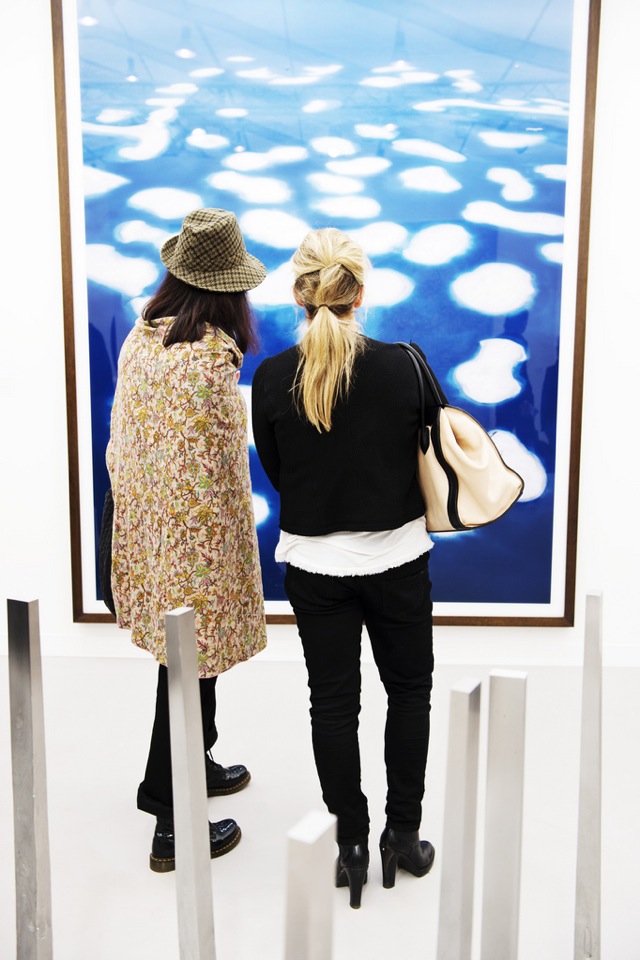

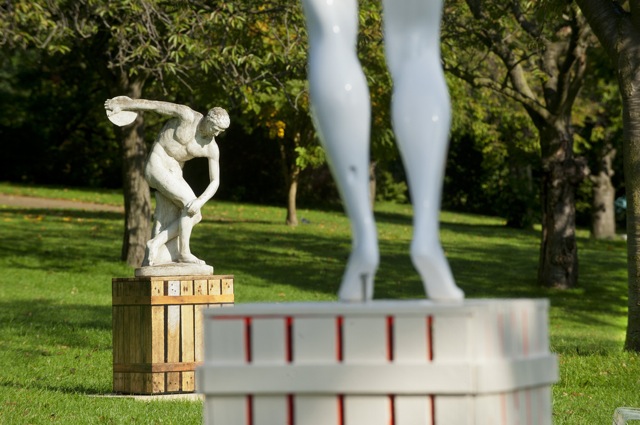
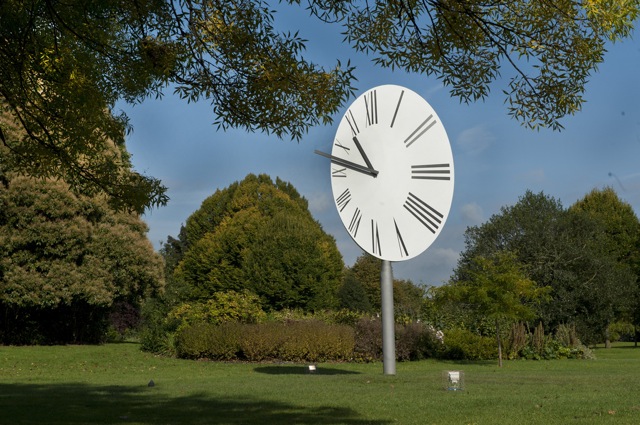
from the top: Andreas Gursky, Dubai World II (2007) White Cube, London; Haegue Yang, Flip Fleet Flow Units (2011) Kukje Gallery, Seoul | Tina Kim Gallery, New York; Alan Kane and Simon Periton, eight fculptures (2012); Anri Sala, Clocked Perspective (2012); all images Courtesy of Linda Nylind and © Frieze London
